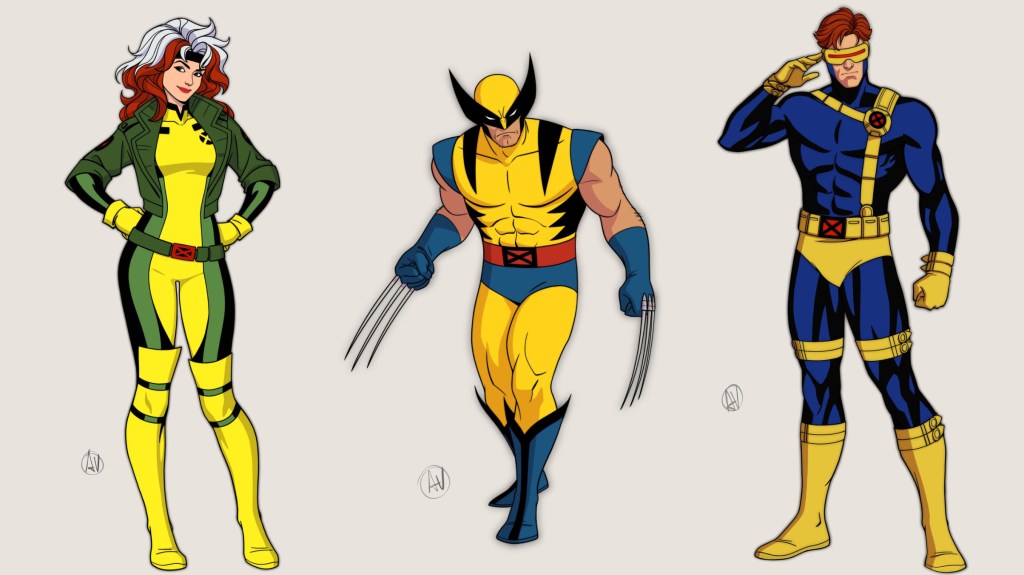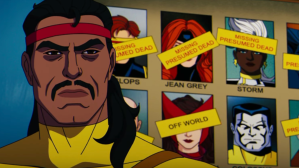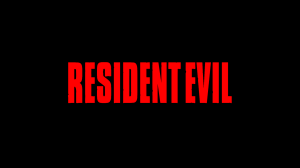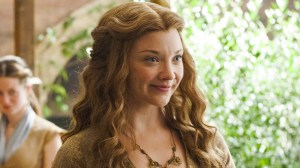“The end and yet… the beginning.” So reads the last shot of the final storyboard for the 1997 series finale of X-Men: The Animated Series, ending on a heroic and dramatic upshot of the X-Men — Cyclops (Norm Spencer), Jean Grey (Catherine Disher), Storm (Alison Sealy-Smith), Jubilee (Alyson Court), Wolverine (Cal Dodd), Beast (George Buza), Gambit (Chris Potter), Rogue (Lenore Zann), and Morph (Rob Rubin) — beneath a dawn skyline alongside Magneto (David Hemblen). The storyboard by artist Dan Veesenmeyer describes the mutants, looking upward after bidding a heartfelt farewell to their mentor Professor Charles Xavier (Cedric Smith), as “hopeful, determined, as if they look towards the future!”
Videos by ComicBook.com
For nearly three decades, fans who grew up watching X-Men: The Animated Series could only imagine what the future might hold for the uncanny X-Men after “Graduation Day.” A blockbuster movie franchise and animated adaptations like 2000’s X-Men: Evolution and 2009’s Wolverine and the X-Men continued the adventures of Marvel’s mutants on both the big and small screens, but it wasn’t until 2024 that the series that defined the X-Men for an entire generation returned, like a phoenix from the ashes, as X-Men ’97.
“For thirty years, people have been asking, ‘Can X-Men [The Animated Series] please come back? Can they do some more episodes? Anything?’” Julia Lewald, a writer on X-Men: TAS and a consulting producer on X-Men ’97, writes in the foreword to X-Men ’97: The Art and Making of the Animated Series (Abrams Books, July 1). The official behind-the-scenes art book is a comprehensive guide to the decades-later revival of the beloved ’90s Fox Kids Saturday morning cartoon.
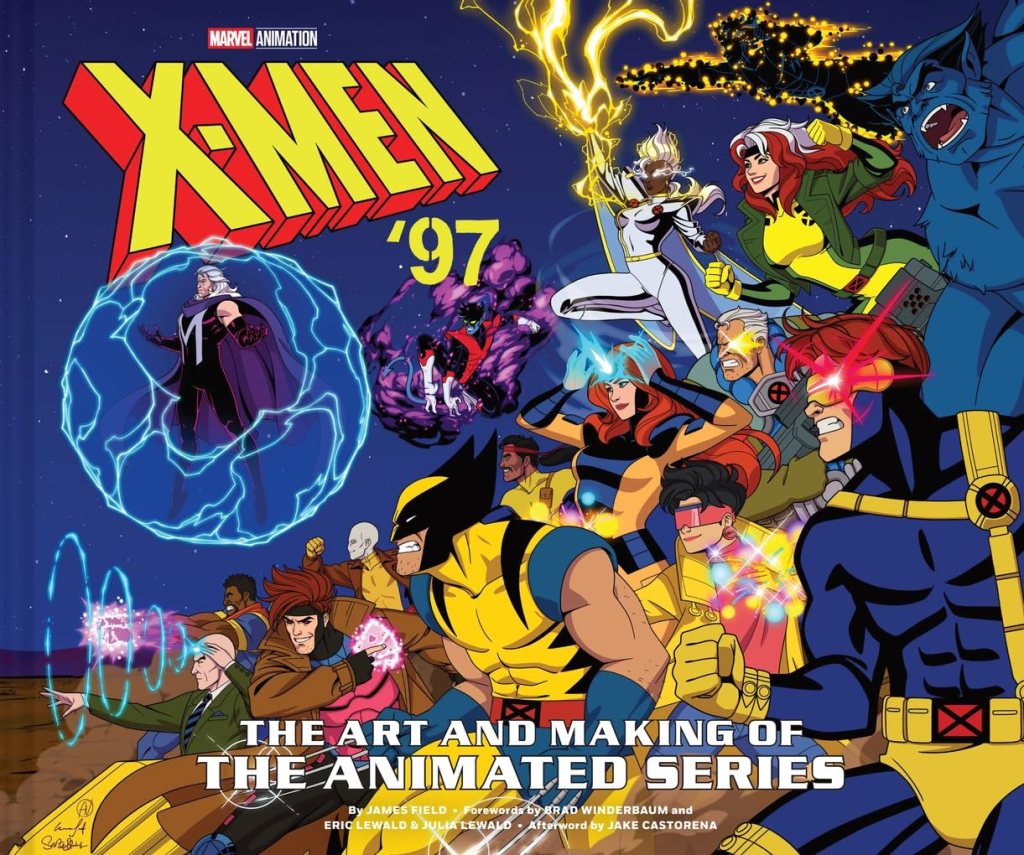
Chronicling the making of the Emmy-nominated X-Men ’97 with storyboards, character sketches, costume designs, stills, cels, animatic frames, and insights from the cast and creators, the book from author James Field (The Art of The Batman) is a veritable Cerebro, containing exclusive intel from the 10-episode first season and the upcoming season 2 of the Marvel Studios Animation series.
Here, ComicBook has rounded up a few of the many revelations readers will find in the 223-page book (out July 1), which can be pre-ordered at Abrams Books or retailers like Amazon.
A Legend Reborn
Brad Winderbaum, X-Men ’97 executive producer and Head of Streaming, Television and Animation at Marvel Studios, pitched a revival of X-Men: The Animated Series to Marvel Studios president Kevin Feige. Having started his career as an associate producer on the 2000 X-Men movie, Feige “was as excited as I was,” Winderbaum recalls in the book. “His first questions: ‘Can we get the music?’ and ‘Can we get the cast?’”
Marvel tapped John Andrew Grush and Taylor Newton Stewart (collectively known as the Newton Brothers) to re-record composer Ron Wasserman’s iconic X-Men theme song and reunited the original show’s surviving cast members, including Dodd as the metal-clawed Wolverine, Sealy-Smith as the weather-wielding Storm, Zann as power-absorbing Rogue, Buza as the erudite, blue-furred Beast, Adrian Hough as the swashbuckling Nightcrawler, and Chris Britton as the villainous Mister Sinister.
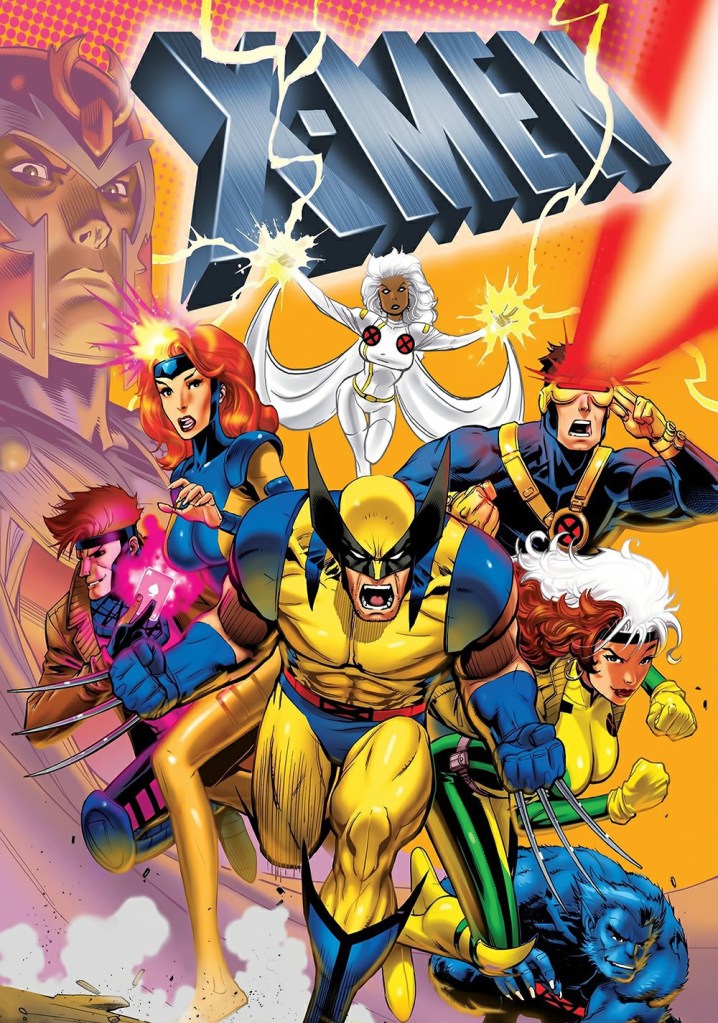
Ray Chase replaced the late Spencer as the voice of Cyclops, and Matthew Waterson took over the role of Magneto from Hemblen. (Both Spencer and Hemblen died in 2020.) Original X-Men: The Animated Series actors Disher (Jean Grey), Alyson Court (Jubilee), Ron Rubin (Morph), Chris Potter (Gambit), Lawrence Bayne (Cable) returned in new roles, with series newcomers J.P. Karliak (Morph), A.J. LoCascio (Gambit), Holly Chou (Jubilee), Jennifer Hale (Jean Grey), Isaac Robinson-Smith (Bishop), and Ross Marquand (Professor X) coming aboard to voice the mutants who protect a world that hates and fears them.
“I think it seemed like something that would never happen; they could never conceive of it, and the fact that they’re all back enthusiastically in the recording booth and really giving it their all, I mean, some of these performances are unbelievable,” Winderbaum says of the cast reunion.
Just as synonymous with X-Men: The Animated Series‘ voices is the theme song and the opening title sequence. “It’s that song and it’s that animation,” notes Dana Vasquez-Eberhardt, VP of Marvel Animation. “It’s this call to arms for fandom. You hear it and you’re like, ‘Yep, I’m on board.’ It’s like a bugle sound. It’s the promise of what the show’s going to be.”
The Best There Is
Next, Marvel hired Beau DeMayo (Moon Knight) as Head Writer “after his inspiring pitch that not only honored the original show but also elevated it by reflecting on the world of the past thirty years,” Winderbaum continues. (DeMayo was dismissed from the series just days before its premiere on Disney+ last March.) Winderbaum’s team included co-executive producer Dana Vasquez-Eberhardt (Your Friendly Neighborhood Spider-Man), supervising producer-director Jake Castorena (Rise of the Teenage Mutant Ninja Turtles), and Head of Marvel Studios Visual Development Ryan Meinerding (Avengers: Endgame), and lead character designer Amelia Vidal (What If…?).
Finally, Winderbaum consulted the team behind X-Men: The Animated Series: Julia and Eric Lewald and series producer and director Larry Houston. “Their guidance throughout the creation of X-Men ’97 showed us how to bring these characters to life,” Winderbaum says. “They told us about the challenges and limitations they encountered in making the original series and how they overcame obstacles. In an attempt to emulate our collective memory of X-Men: The Animated Series, we created our own rule book so we could retain the look and feel of the original.”
Second Genesis
Picking up where X-Men: The Animated Series left off decades earlier, Marvel’s X-Men ’97 was designed to be “fresh but familiar in this day and age,” Castorena says of the sequel to the original series that aired 76 episodes over five seasons between 1992 and 1997.
“The original pitch was about reviving the series, not about rebooting it and not about remaking it,” Winderbaum adds. “One of the reasons was there are so many stories in the X-Men comics that you could continue telling in that X-Men: The Animated Series style.” As for revisiting the Jim Lee-inspired designs of the ’90s series, Winderbaum says, “The bigger question is: Why go back to a style that seems antiquated or old-fashioned instead of creating some big CG extravaganza on-screen? The real reason is because I love that aesthetic; I love the way that show looks.”

“We are a revival. There’s already a sandbox that we are fortunately beholden to,” says Castorena. “It’s a combination of what we learned so far in animation — the recognizable nineties style of the show, making it producible in this day and age and designing to where we can keep the quality.”
X-Men: Blue & Gold
X-Men: The Animated Series adapted such seminal X-Men comic storylines as Days of Future Past, the Phoenix/Dark Phoenix Saga, and Fatal Attractions, while X-Men ’97 cited comics like the Inferno crossover, the Storm-centric Lifedeath, and New X-Men‘s “E Is for Extinction” as some of the biggest influences for season 1.
Another major influence was the ’90s blue-and-gold era of X-Men. Not only did the team split into two field squads due to an expansive roster — Cyclops’ Blue team and Storm’s Gold team — but the Lewalds’ show bible for X-Men: The Animated Series also broke the seasons by dividing each story’s roster of characters into “A-team” (the most prominent in a story), “B-team” (somewhat prominent in a story), and a “C-team” (least prominent in the story).
For X-Men ’97, the “A-team” consisted of Cyclops, Jean, Magneto, and Storm, prominent characters with their own multiple-episode arcs; the “B-team” was Rogue, Gambit, and Jubilee, with their own episodic arcs; and the “C-team,” Wolverine, Morph, and Beast “to bring flair and color to stories while also having their own moments to shine.”
Weapon X-Man
Wolverine, for example, has been the X-Man since even before The Animated Series aired its final episode in 1997, with Hugh Jackman’s Wolverine taking center stage in everything from 2000’s X-Men movie to his own trilogy to 2024’s Deadpool & Wolverine. While Logan may be on the “C-team” this time around, rather than being at the forefront, the creators wanted to show other sides of Wolverine — namely through his relationship with mom-to-be Jean Grey and his close bond with the shape-shifting Morph.
“We’re seeing how he actually integrates, not just him being that lone wolf,” Castorena notes. Adds episodic director Emi/Emmett Yonemura, “What people want to see with Wolverine is the brawler, the one who’s going to get in there and basically be your tank and your damage dealer, which I love about him. But you know, it’s fun to explore his soft side because I think you have to always balance it out … I think his masculinity comes from his age, the fact that he has all this experience, the fact that some Wolverines have seen a horrible future with the X-Men. So there’s a lot to unpack with him.”
In adapting stories like Inferno and E Is for Extinction into one over-arcing story that converged in the three-part “Tolerance Is Extinction” season finale, Vasquez-Eberhardt says, “You have these characters and the emotional journey they’re going through. To do justice to all those stories, [even with] our love of these individual characters, you have to be very careful. It all has to tie together. It has to deliver on this big promise of these epic storylines.”
“To Me, My X-Men!”
When field leader Cyclops (Ray Chase) utters that command — rallying Wolverine (Cal Dodd), Storm (Alison Sealy-Smith), Rogue (Lenore Zann), Gambit (A.J. LoCascio), Beast (George Buza), Morph (J.P. Karliak), and Bishop (Isaac Robinson-Smith) inside a crater he shatters with an optic blast unleashed from behind his ruby quartz visor in mid-air — it’s a raw display of power.
Cyke’s superhero landing was also “one of the biggest animation challenges,” according to FX Lead Designer and FX Supervisor Chris Graf. “I did roughly twelve design stages for that shot to sell each moment that a new [visual effects] element was introduced.”
“This scene was important to show how powerful and capable Cyclops actually is, and it was also extremely important to our showrunner and directors that Cyclops finally got his long-overdue cinematic moment to really sell his strength as team leader,” adds Graf, who animated the shot himself.
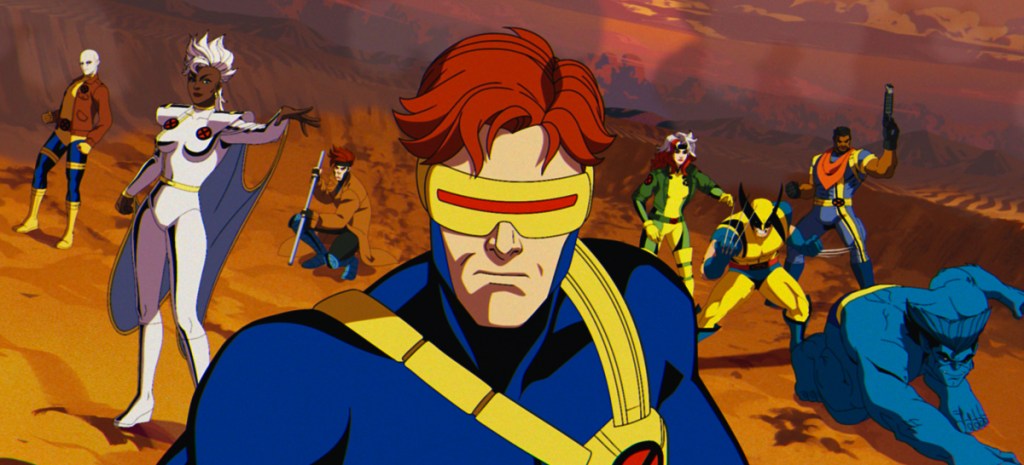
“With all the different layers of sand, wind, dust, optic blast, and shockwaves, it ended up taking roughly eighty hours from start to finish to animate the six-second scene,” he adds. “It was very important in design to make sure we got the idea across that his optic blast is concussive — and not a laser made of heat — and that he can also adjust the power level needed when fighting different types of characters. Being able to reduce his power levels to use them in a fight against common thugs or turn them up when he’s fighting three-story-high Sentinels was a level of precise control we wanted to make sure the leader of the X-Men had.”
X-Men ’97‘s “To Me, My X-Men” series premiere ends with its own seismic shift in the X-Mansion: the X-Men’s archnemesis, Magneto, the mutant Master of Magnetism, tells the team that he’s inherited everything from the last will and testament of Charles Xavier. In setting up The Trial of Magneto and a reformed Magneto leading the X-Men — another classic story from the comic books — Castorena reveals, “That ending went through a few different scene and tonal changes.”
“The first episode has to really be a delicate balance of fresh but familiar, because if we come out and start swinging, like our team does in [Episodes] 2 and 3, it’s awesome, but it’s just slightly elevated. You have to gain the audience’s trust first. You have to let them know we understand what the X-Men are; we understand the shoes we have to fill.” Like X-Men: The Animated Series, Castorena continues, “The whole series is founded on cliff-hangers to get you to want to come back for more. So what’s a bigger, better cliff-hanger than the X-Men’s most notorious foe coming in and saying, ‘Oh, yeah. By the way, this is all mine.’”
Next Time on X-Men ’97…
Over 223 pages, X-Men: The Art and Making of the Animated Series explores the 10- episode season 1 with dedicated chapters. But in Marvel fashion, the book concludes with its own teaser for X-Men ’97 season 2.
The season finale, “Tolerance Is Extinction – Part 3,” ends with the X-Men believed dead, having stopped Bastion (Theo James) from hurling Magneto’s Asteroid M into the Earth to cause an extinction event. Bishop informs Forge (Gil Birmingham) that the X-Men are lost to time after “E-Day,” leaving them to form a new team for a rescue mission next season.
Season 1 left off with Xavier, Magneto, Rogue, Nightcrawler, and Beast in the past in the year 3000 BCE, the time of En Sabah Nur (Adetokumboh M’Cormack); Wolverine, Storm, and Morph MIA in the present; and Cyclops and Jean with a young Nathan Summers, the future Cable, in the year 3960. Season 2 will span all three timelines, with En Sabah Nur — aka Apocalypse (voiced by Marquand) — also returning in present-day Genosha in a mid-credits scene.
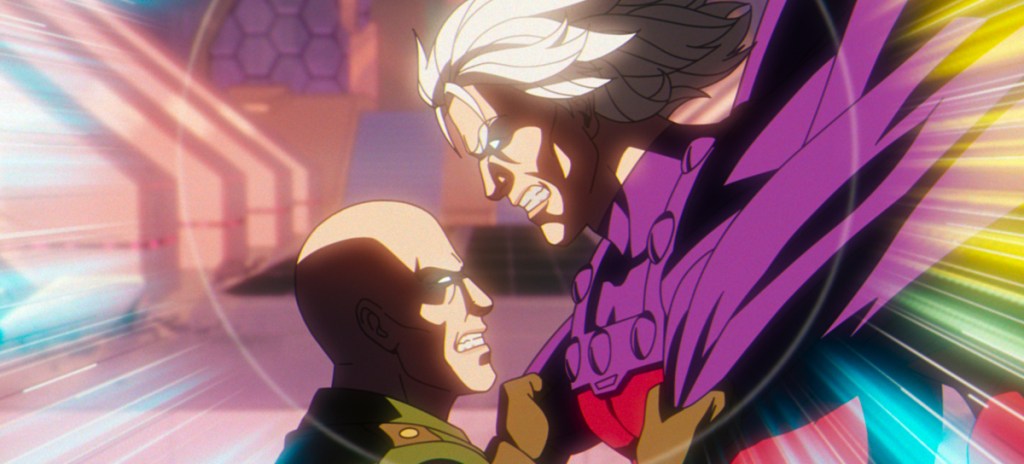
X-Men ’97 season 2 “is going to be some of the most beautiful work I think we’ll get to see in episodic TV animation,” Castorena teases. “Just as far as what our color and paint team is doing for environments and designs. I’m just really excited for what our internal team is doing to help differentiate all that good stuff. And I’m sorry you guys are going to have to wait to see it. But, you know, let us bake the cake.”
In an afterword, Castorena writes that the original X-Men: The Animated Series was a success because the Lewalds and Houston honored the source material.
“Now that show is our source material — what we’re continuing from, standing on the shoulders of X-Men: The Animated Series. It’s our North Star, and it’s why I think X-Men ’97 has been embraced by the fans — because we have the best team in the game, and we’re fans ourselves. We’re making the stories that we want to see, and we have the support of a studio that cares about the quality of our storytelling and values the source material,” the supervising producer-director writes. “Y’all have no idea what’s coming at you for season two. The team is setting a new bar for narrative and visual storytelling in television animation. I’m seeing a true marriage of artists across the globe working together to make something genuinely special.”
“If I could tell six-year-old me what I get to see and do, he wouldn’t believe it,” Castorena concludes. “I could also tell him that it’s OK to like what you like and to be who you want to be. But he wouldn’t need me to say any of that… because he already had the X-Men.”
X-Men ’97: The Art and Making of the Animated Series is available July 1 from Abrams.

